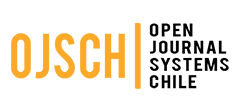
- Key words: Fertilizers, metallic trace elements, urea, superphosphate (STP), soil, atomic adsorption spectrophotometry (EAA)
Copyright (c) 2025 SChQ

This work is licensed under a Creative Commons Attribution-NonCommercial-ShareAlike 4.0 International License.
Abstract
The practice of fertilization is necessary to reincorporate and provide the soil with additional sources of nutrients in forms that can be assimilated by plants. Fertilizers often contain very small amounts of trace metals as impurities. These can be incorporated into the human diet through the ingestion of food contaminated with these elements.
The soil samples studied came from agricultural soil in the V region, Chile. The characterization carried out indicated a pH and EC expected for a soil with this use, while low values for CEC and MO % were found. The samples were classified as medium P and extremely N-rich soils, and significant increases in these nutrients were found in the SPT and urea treatments, respectively.
The soil was incubated according to three different treatments: with 0.1% of urea, superphosphate (SPT) (5.0 g per pot). After 8 weeks of incubation, wheat seed were planted and harvested after three weeks of growth. Trace metals were determined by Atomic Absorption Spectroscopy (AAS).
Trace metal concentrations followed the trend: Cu < Cr < Zn < Ni for urea treatment; while: Ni < Cu < Zn < Cr for treatment with SPT. The maximum percentage contributed by fertilization was for Cr (59 %). The concentration of metals in the root, stem and leaf of the crop were found to be below the detection limit, except for Zn and Cu in the root. The bioaccumulation factor for Cu and Zn was less than 1 for all treatments, while the translocation index for Zn was also less than 1.
The use of SPT is consistent with a greater contribution of trace metals to the soil compared to urea; consequently, the use of chemical fertilizers could increase the concentration of trace metals in the soil and incorporate them into the vegetables grown in the soil. For this, the use of organic fertilizers such as compost and humus obtained from organic waste raw materials is an increasingly popular alternative in various crops, for which it is necessary to evaluate the trace metal content, as these can accumulate in both the soil and the substrates.

References
- V. REFERENCES
- Reyez, M. 2010. Épsilon. 1(15), 6.
- Reyez, M., Barreto, L. 2011. Épsilon. 1(16), 3.
- Camacho Barreiro A, Ariosa Roche L. Diccionario de términos ambientales. La Habana: Centro Félix Varela. Diccionario de términos ambientales. La Habana: Centro Félix Varela; .p.45, (1998).
- Duffus, J. H. Pure and Applied Chemistry, 74(5), 797, (2007).
- Kabata - Pendías A., Mukherjee A. Trace element from soil to human. Springer. New York.Abrol, I.(2007),
- Montenegro, G., Fredes, C., Mejías, E., Bonomelli, C., Olivares, L. Agrociencia, 43(4), 427, (2009).
- Jomolca-Parra, Y., Lima-Cazorla, L., Manduca-Artiles, M. 2013. Revista Cubana de Química, 25(3), 345, (2013).
- [ De Gregori, I., Fuentes, E., Rojas, M., Pinochet, H., Potin-Gautier, M. 2003. Journal of Environmental Monitoring, 5(2), 287, (2003).
- Muhammad, S.; Ullah, R.; Jadoon, I.A. Microchemical Journal, 149, 103971, (2019)
- Méndez, J. P., Ramírez, C. A. G., Gutiérrez, A. D. R., García, F. P. Agroecosystems, 10(1), 29, (2009).
- Angelova V., Ivanova, R., Delibaltova, V., Ivanov, K. Industrial Crops and Products, 19, 197, (2004).
- Orozco-Corona, D., Consuelo, L., Megchún-García. Valente, J., Hernández, A. Determinación de los factores de bioconcentración, traslocación y riesgos potenciales a la salud en Capsicum annuum L. Tomo II Biotécbnología y Ciencias Agropecuarias. Pag. 307, (2022)
- IFA, (2022). Recuperado el 8 de diciembre de 2023 de Worldbank.org. https://www.worldbank.org/en/news/podcast/2022/07/22/fertilizer-volatility-and-the-food-crisis.
- [ Odepa. La urea y su comercialización en Chile. Oficina de Estudios y Políticas Agrarias. Ministerio de Agricultura, Santiago, Chile, (2012).
- Gimeno-García, E., Andreu, V., Boluda, R. Agraris, 7, (2001).
- Pezzarossa, B., Petruzzelli, G., Malorgio, F., Tognoni, F. Communications in Soil Science and Plant Analysis, 24(17-18), 2307, (1993).
- Rodriguez, J., Alcalá. J.,Hernández, A.,Rodríguez, H., Ruiz, F., García, J., Díaz, P. Revista Mexicana de Ciencias Agrícolas, 5(4), 695, (2014).
- Raven, K., Loeppert, R. J. Environ. Qual. 26(2), 551, (1997).
- Kang, Y., Pan, W., Zeng, L., Zhang, Q., Luo J. Sci Total Environ., 521-522:144, (2015).
- RAPAL. Red de Acción en Plaguicidas y sus Alternativas para América Latina (RAPAL). Contaminación y eutrofización del agua. Impactos del Modelo de Agricultura Industrial. Montevideo, Uruguay, (2010).
- Sadzawka A., Carrasco M.,Grez R., Mora M., Flores H., Nesman A. (2006), Métodos de análisis recomendados para suelos de Chile. Instituto de investigación agropecuaria. (INIA, Chile).
- Walkley, A. & Black I.A., Soil Science, 37(1): 29, (1934).
- Van Reeuwijk, L. P. Procedures for soil analysis. International Soil Reference and Information Centre. Technical paper 9. Wageninger, The Netherlands., (1986).
- Aparicio, V. C., Barbacone, A., & Costa, J. L. Ciencia del suelo, 32(1), 94, (2014).
- Ginés, I., Mariscal-Sancho, I. Incidencia de los fertilizantes sobre el pH del suelo (2002).
- MAPA. Ministerio de agricultura pesca y alimentación, España. Interpretación de análisis de suelos. hoja divulgatoria n°5/93 (1994).
- Silviera, M.L.A., Alleonl, L. R .F., Ghilherme, L. R. G. Scientia Agricola 60 (4), 793, (2003).
- Molina, M., Aburto, F., Calderón, R., Cazanga, M., & Escudey, M. Soil and Sediment Contamination, 18(4), 497, (2009).

